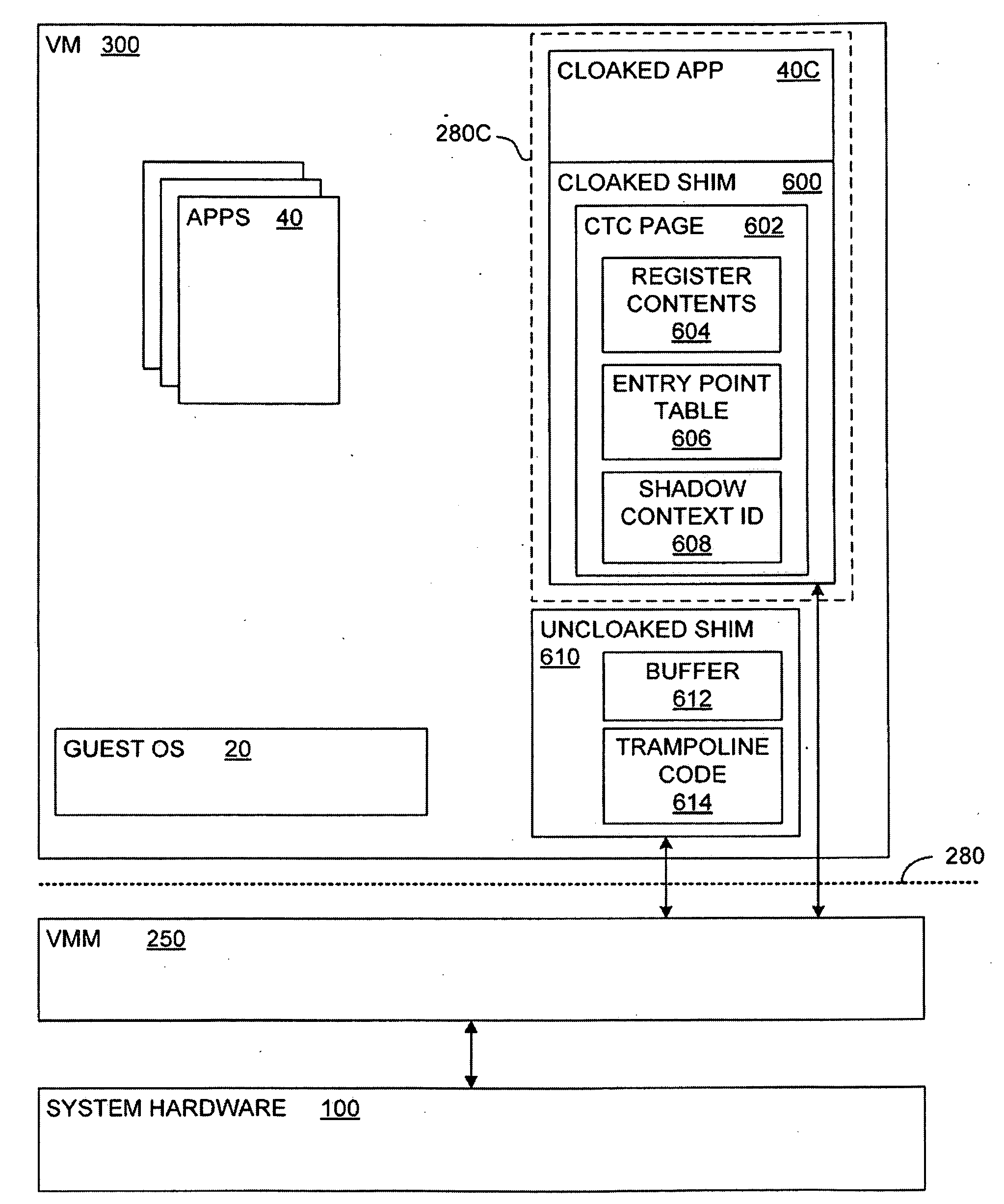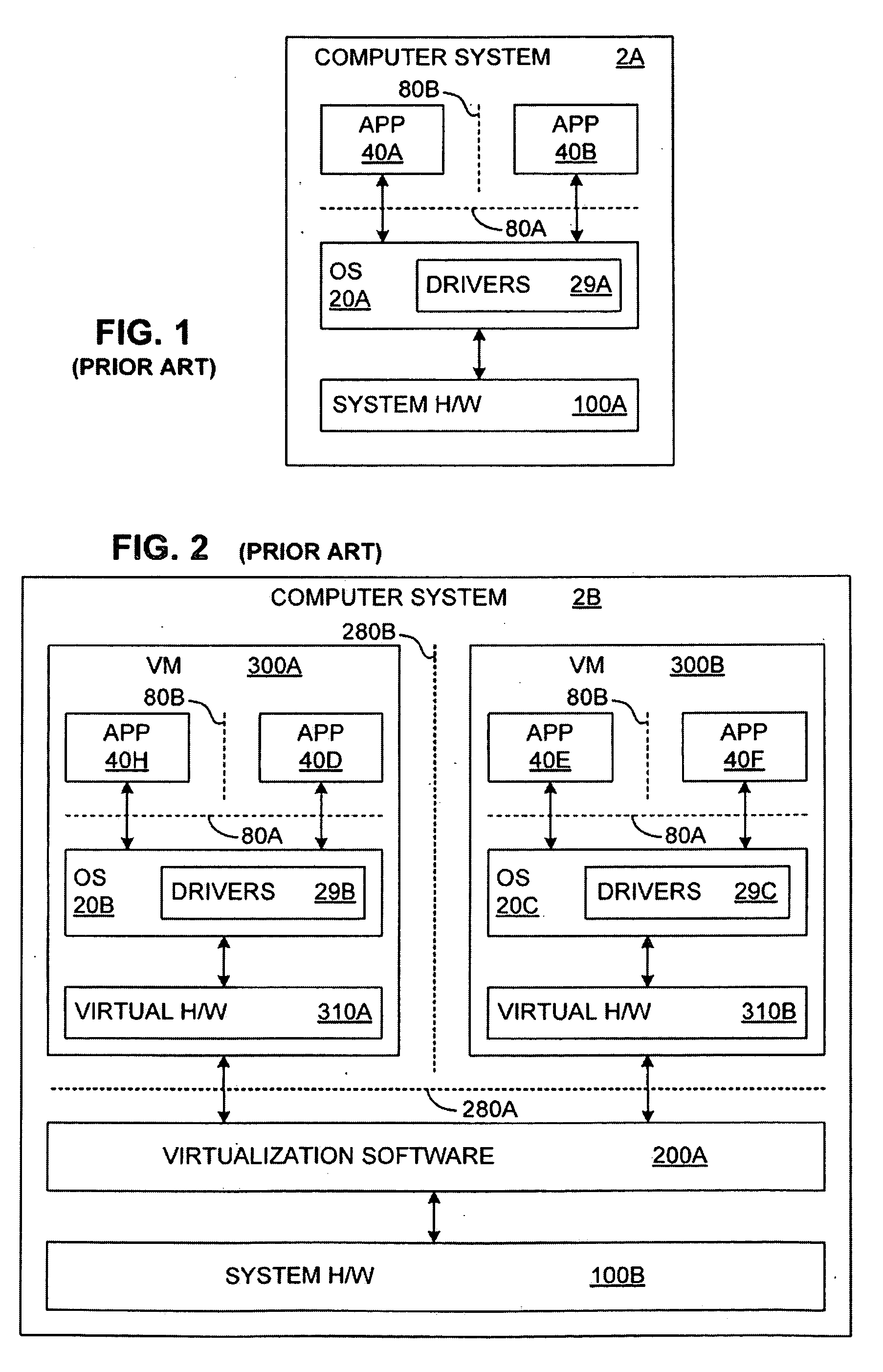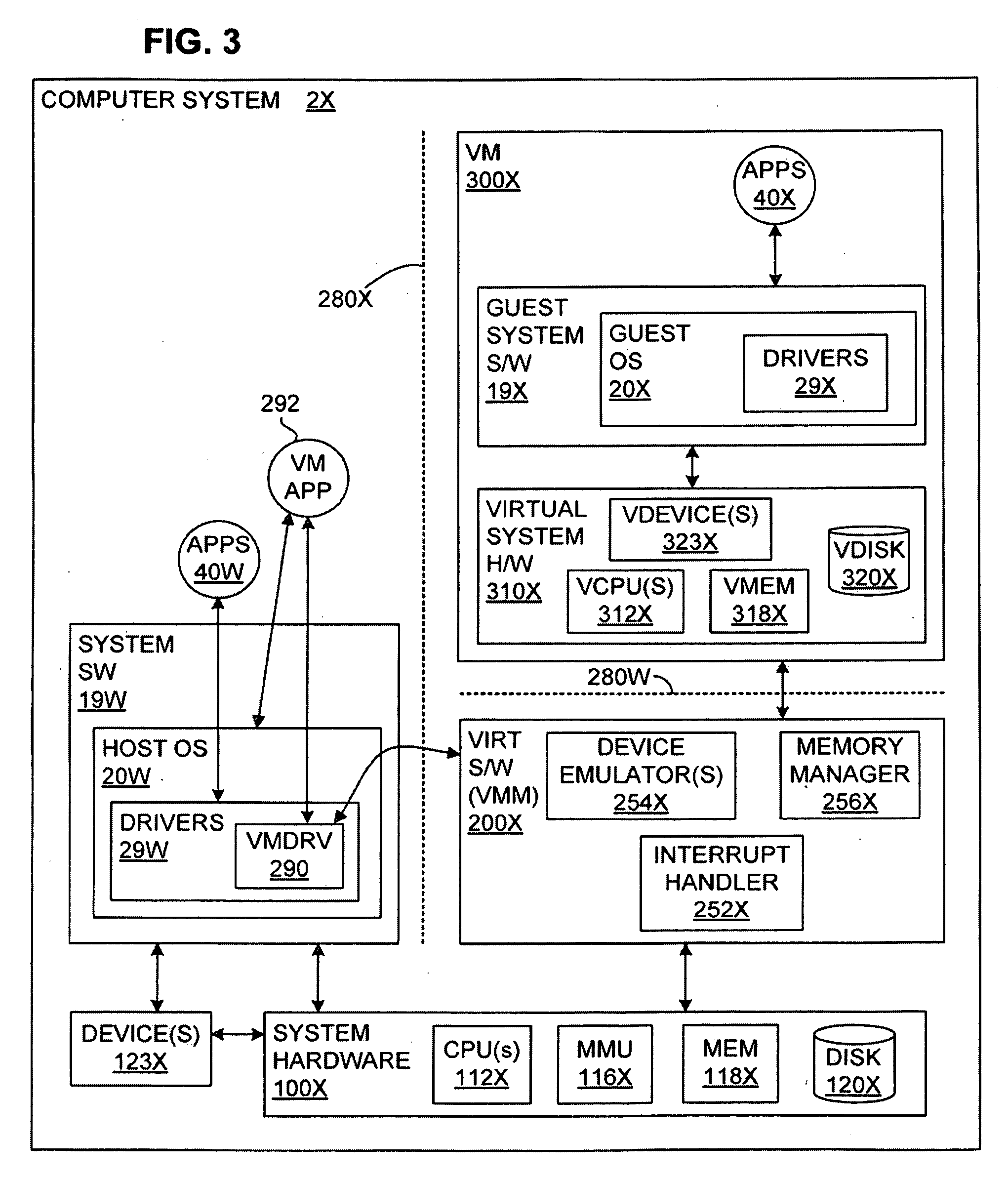Transparent Memory-Mapped Emulation of I/O Calls
a technology of i/o calls and memory mapping, applied in the field of transparent memory mapping emulation of i/o calls, can solve the problems of low security assurance low security of known commodity operating systems, and high complexity of such systems
- Summary
- Abstract
- Description
- Claims
- Application Information
AI Technical Summary
Benefits of technology
Problems solved by technology
Method used
Image
Examples
Embodiment Construction
[0051]Application security is often limited by the poor assurance of commodity operating systems. A virtual-machine-based system in accordance with an embodiment of the present invention may protect the privacy and integrity of application data, even in the event of a total OS compromise. Embodiments of the present invention present an application with a normal view of its resources, but the OS with an encrypted view of those resources. This allows the operating system to carry out the complex tasks of managing an application's resources, without allowing it to read or modify them. Thus, embodiments of the present invention offer defenses against application data being compromised.
[0052]Embodiments of the present invention build on “multi-shadowing,” a mechanism that presents different views of “physical” memory, depending on the context performing the access. This approach offers an additional dimension of protection beyond the hierarchical protection domains implemented by traditi...
PUM
 Login to View More
Login to View More Abstract
Description
Claims
Application Information
 Login to View More
Login to View More - R&D
- Intellectual Property
- Life Sciences
- Materials
- Tech Scout
- Unparalleled Data Quality
- Higher Quality Content
- 60% Fewer Hallucinations
Browse by: Latest US Patents, China's latest patents, Technical Efficacy Thesaurus, Application Domain, Technology Topic, Popular Technical Reports.
© 2025 PatSnap. All rights reserved.Legal|Privacy policy|Modern Slavery Act Transparency Statement|Sitemap|About US| Contact US: help@patsnap.com



